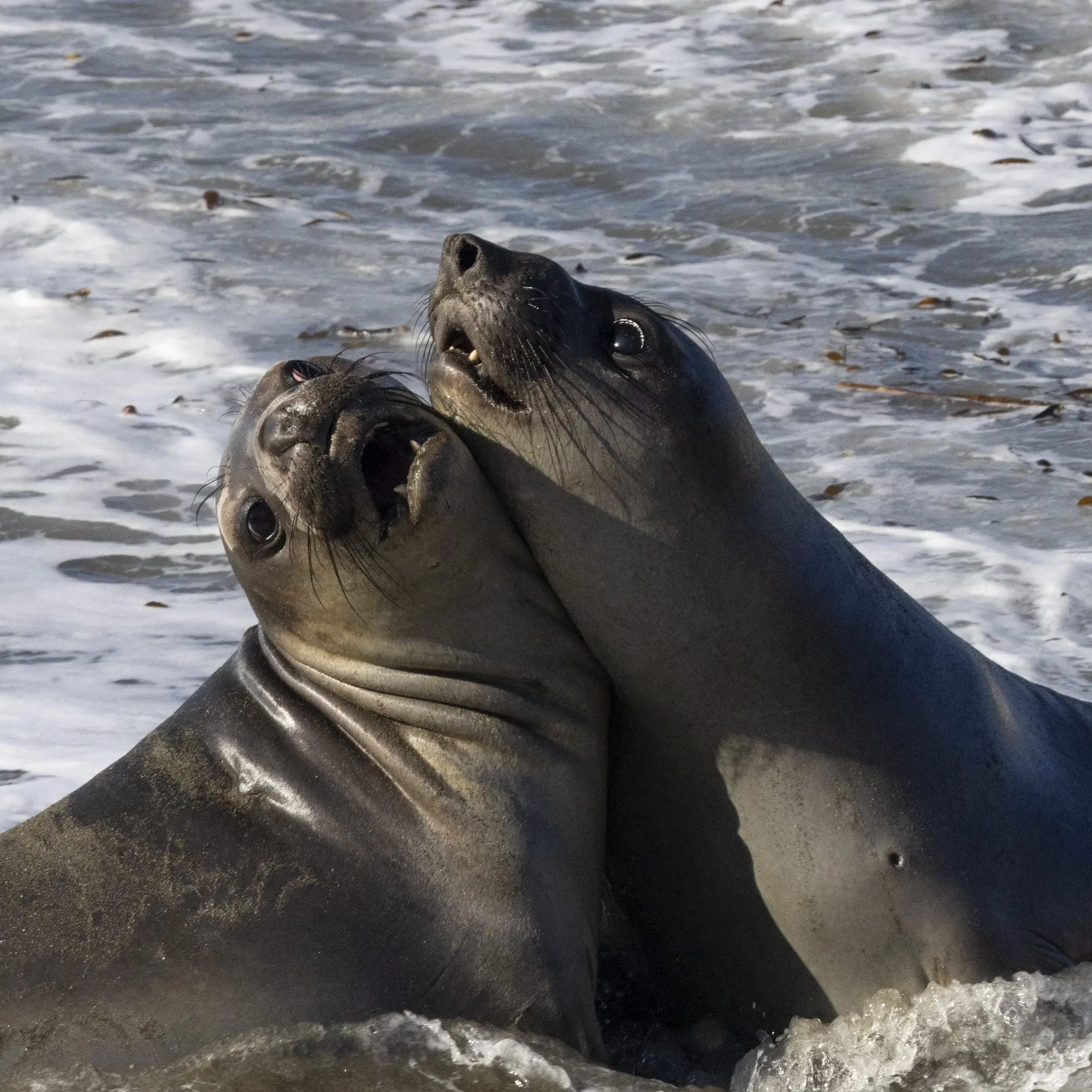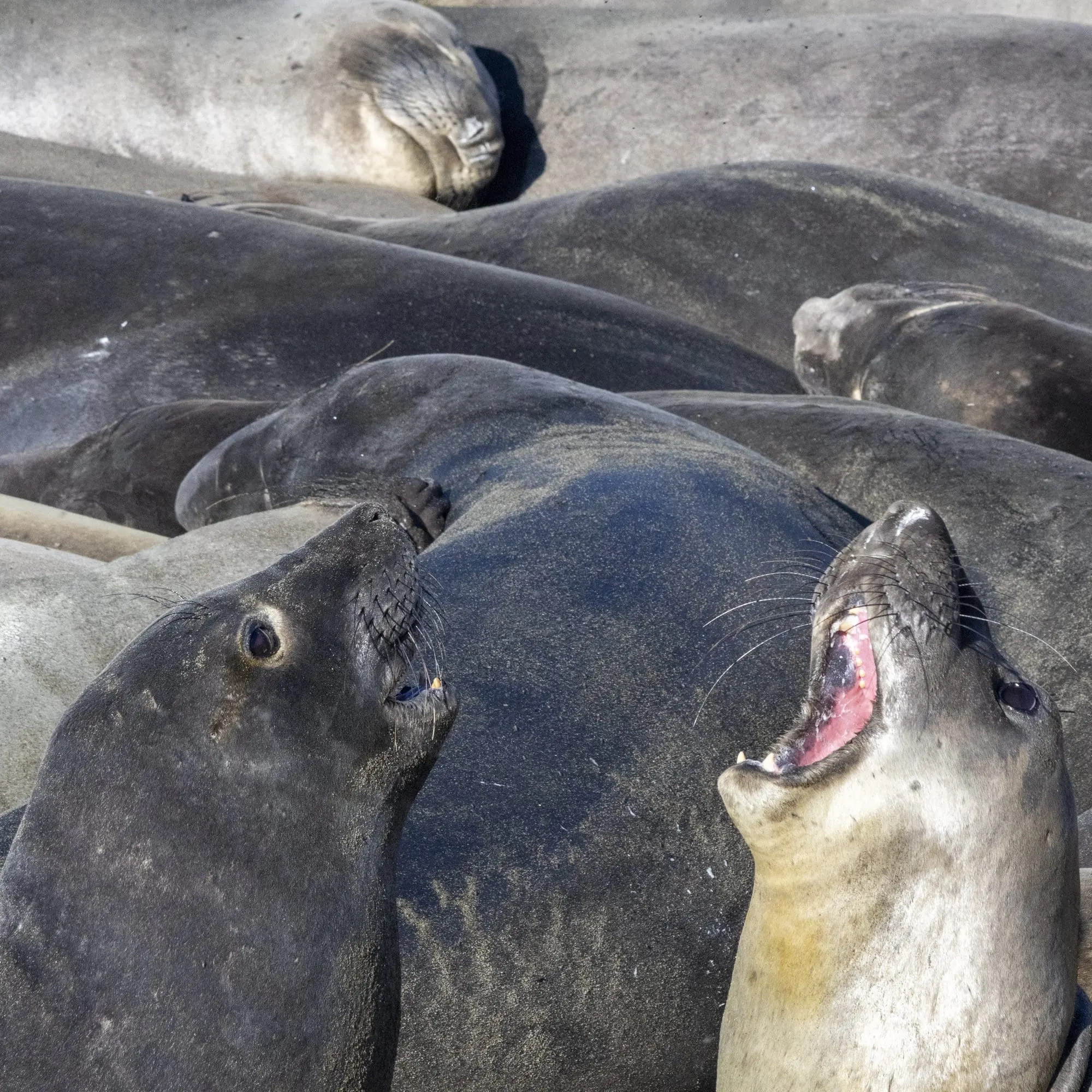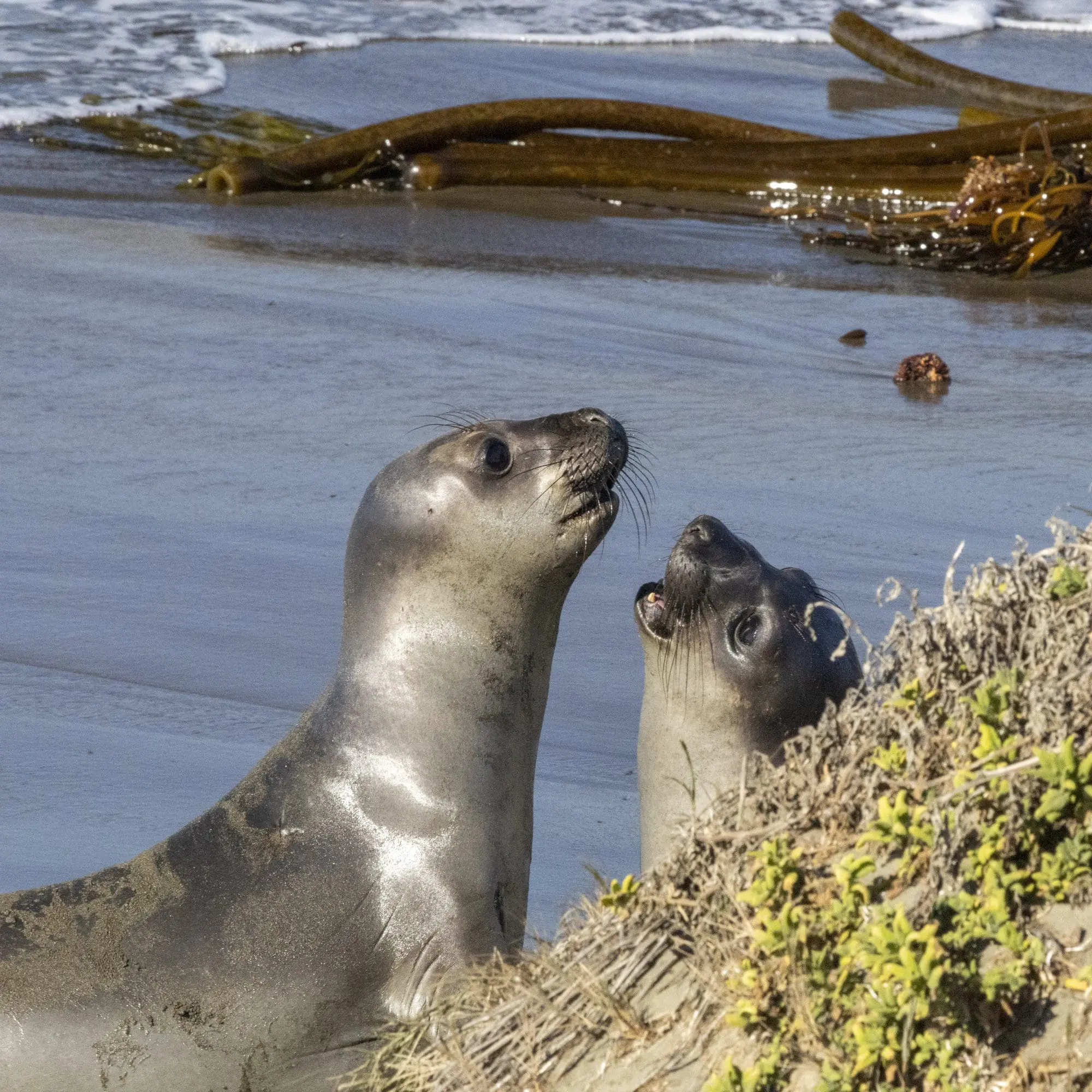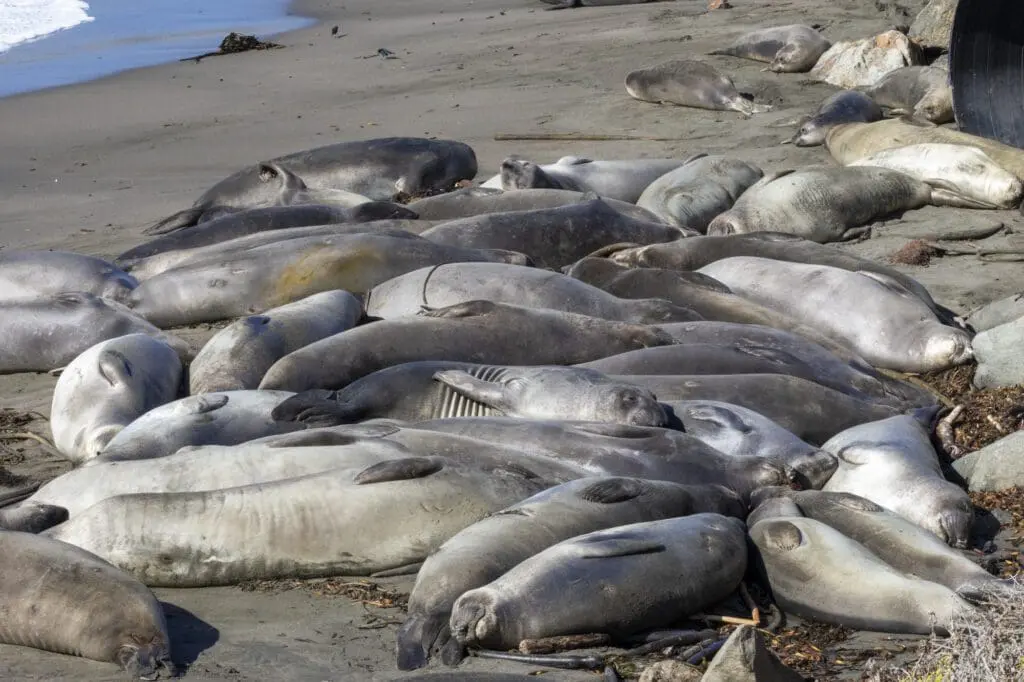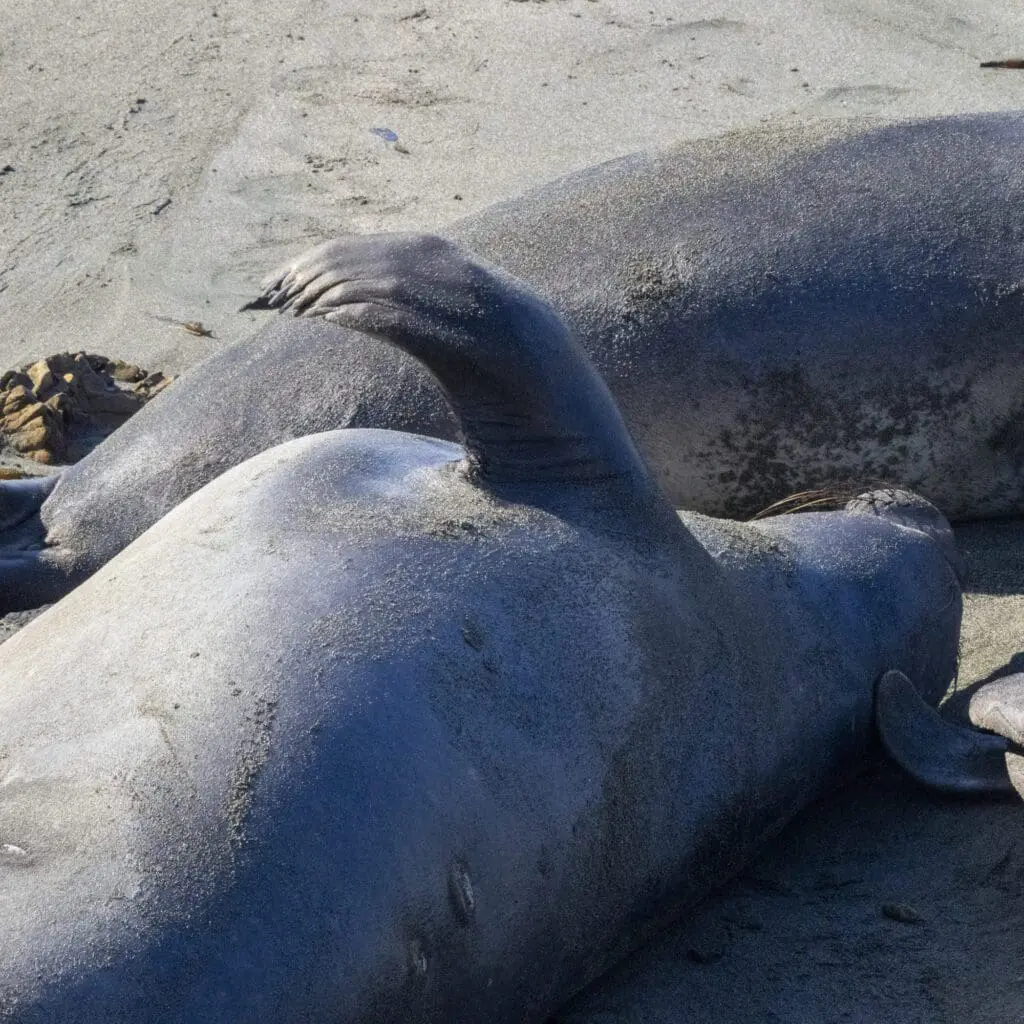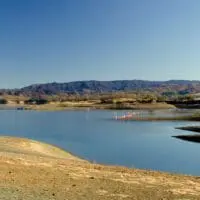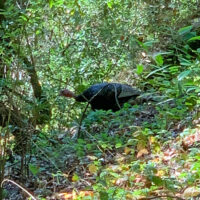You can click on most of the images to enlarge them. Full-size, high-resolution versions are available in our Google Photos album.
On one of my motorcycle trips down the coast through San Simeon, I’d passed a beach whose parking lot was jammed with cars. Because the beach itself was jammed with elephant seals. So, we thought it’d be fun to check out the Elephant Seal Visitor Center (check out their live webcam during peak pupping/breeding season, around Valentine’s Day).
We’re glad we did, because besides picking up some cool swag we learned a ton about these fascinating creatures:
- They don’t eat all the time they’re ashore. Which spans months!
- Both the males and the females compete for prime onshore locations during pupping/breeding season.
- They don’t hold their breaths when they dive for food in the ocean (and the females, in particular, can descend several thousand feet). In fact, they exhale before diving to avoid getting the bends. They depend instead on their having far more blood, per unit body mass, than a typical mammal, and a higher density of red blood cells.
- Mature females are typically either pregnant or nursing — they get little to no time off from motherhood throughout the year.
- Once the pups are weaned the females depart. They don’t hang around to teach their offspring how to swim or hunt — the pups have to figure all that out on their own. Which is one of the reasons most of them don’t survive too long.
- Their biggest predator is the great white shark. But there’s also a two-foot-long shark that’s evolved to chew circular divots out of a seal’s blubber. The wounds are rarely fatal, or even particularly debilitating, but you can see the circular scars on most of the animals.
- The species has rebounded from being hunted to near extinction in the late 19th century. All modern elephant seals descend from a single colony that survived on an island offshore Baja California. They’ve recently been extending their range throughout California (the San Simeon colony is only a couple of decades old).
BTW, you won’t notice much, if any, of the expected elephant-like snout on any of the seals pictured here. That’s because these are all juvenile males and females.
The males don’t develop the snout until they go into adolescence, at around five years of age, and they don’t typically breed until they’re about nine years old (and they generally only live to about 14 years). They also develop chest armor when they begin growing their snouts.
The females can live longer. There’s a documented case of one female that lived to be 21…and bore a pup successfully every year since she first started breeding, probably around age four.
So, what do they do while they’re ashore and not competing for mates, or nursing pups? Pretty much they just sleep.
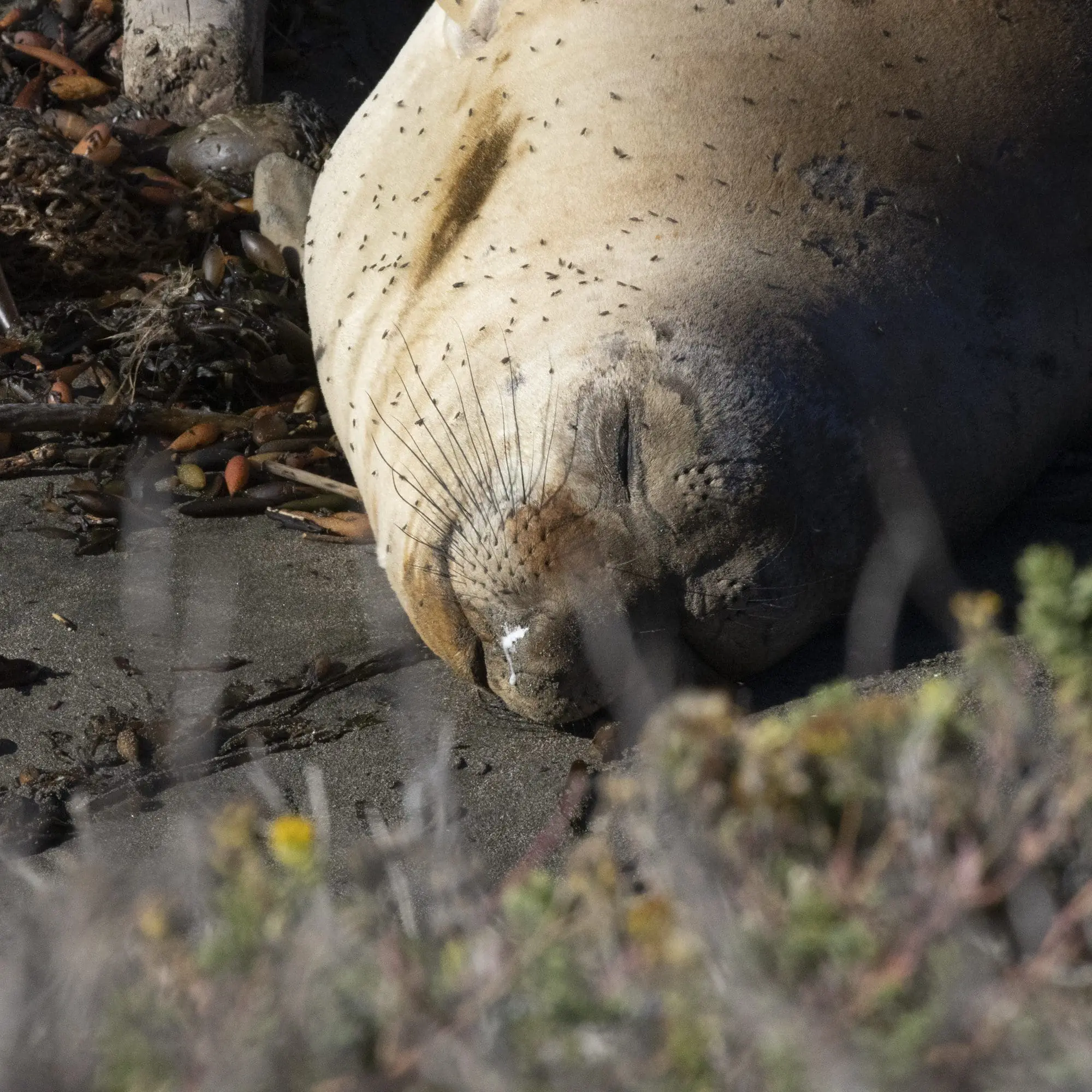
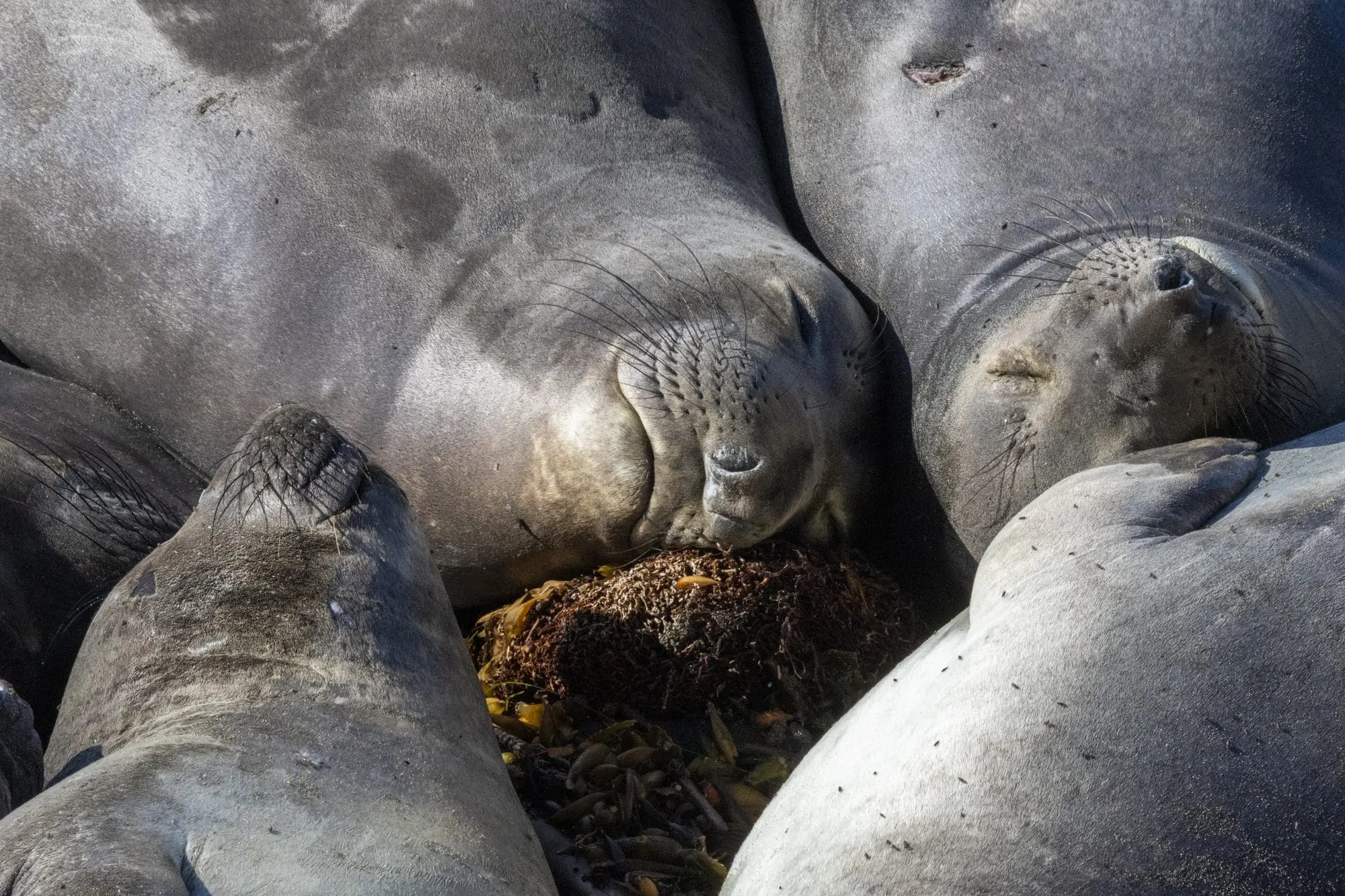

That’s both to conserve energy, toughen up so they can move around more easily on land, and stay cool.
Overheating is a potential problem for them on land. They have so much blubber they can maintain a 100-degree core body temperature in the depths of the ocean, but that insulation works against them onshore.
Which is why you’ll often see them sticking a flipper up into the air — they’re using it as a radiator, to dissipate heat.
Of course, they do wake up occasionally to complain to each other, generally when one of them has jostled another.

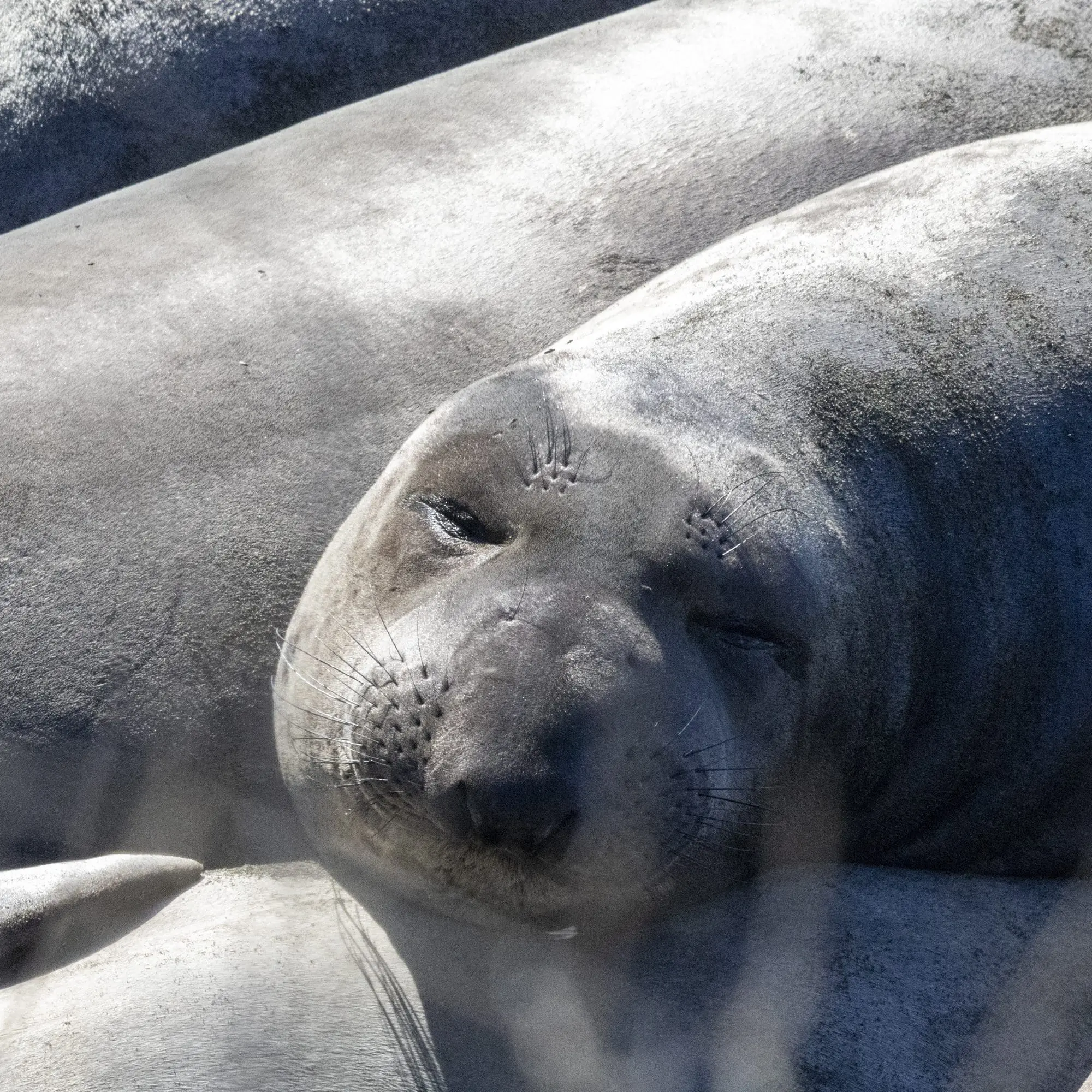
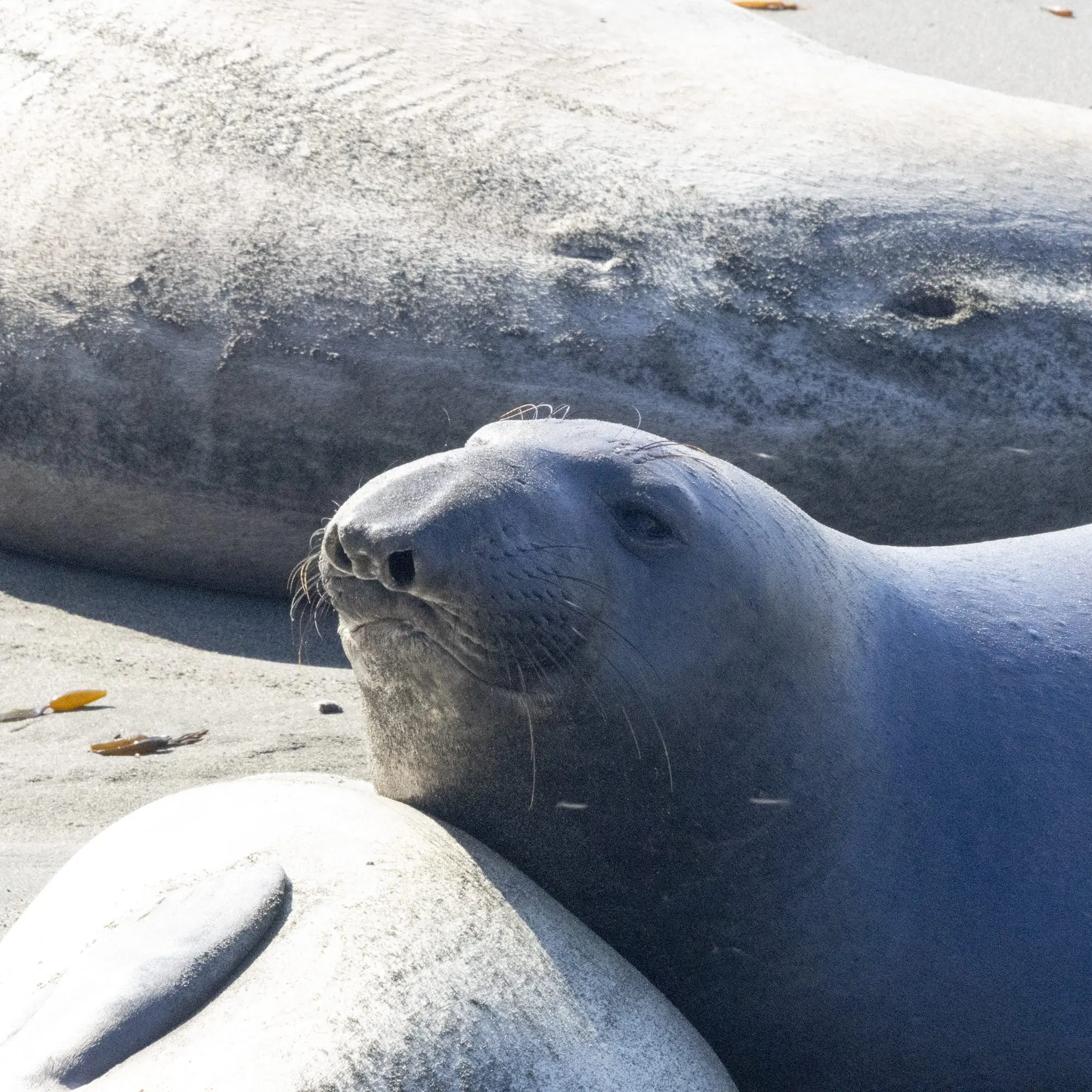
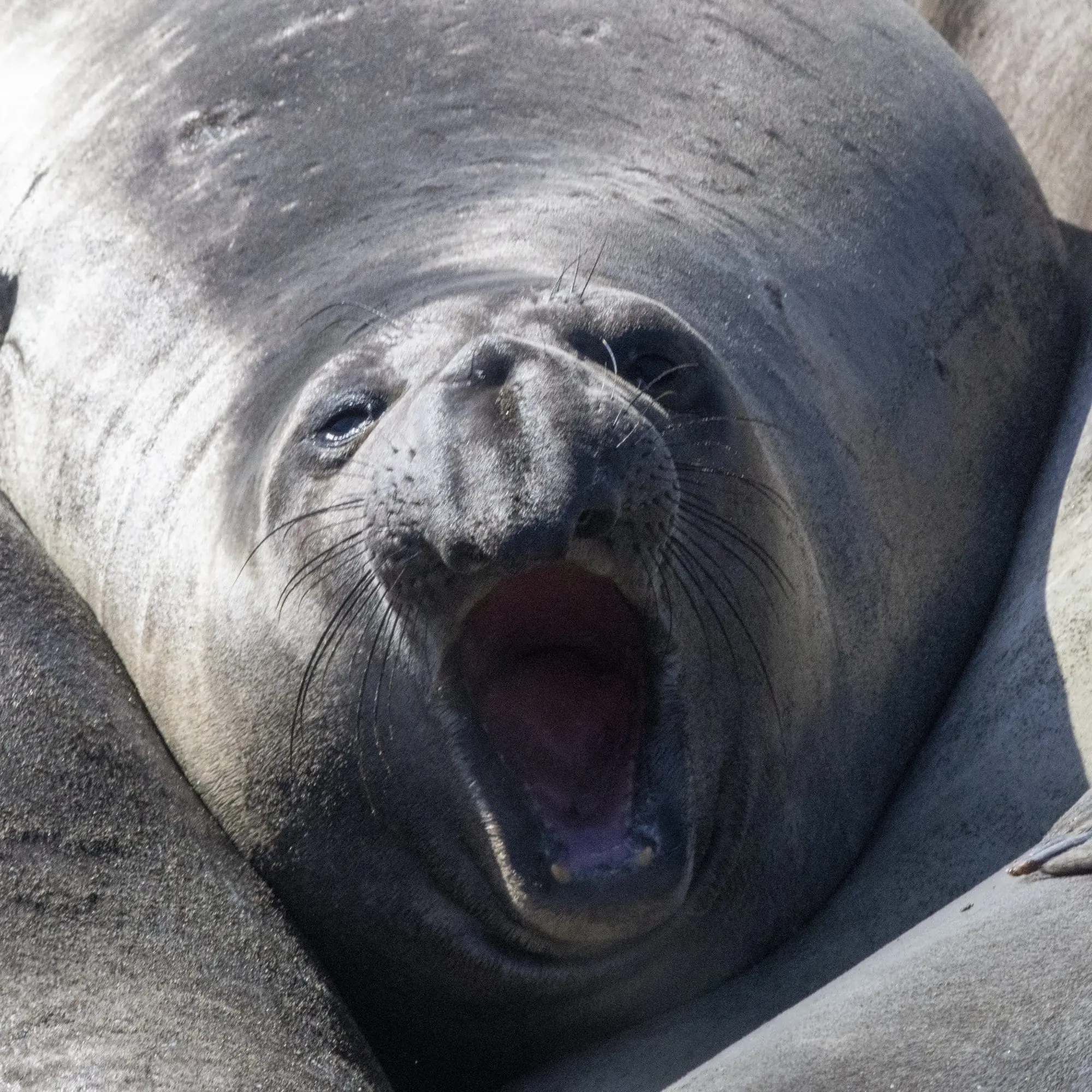

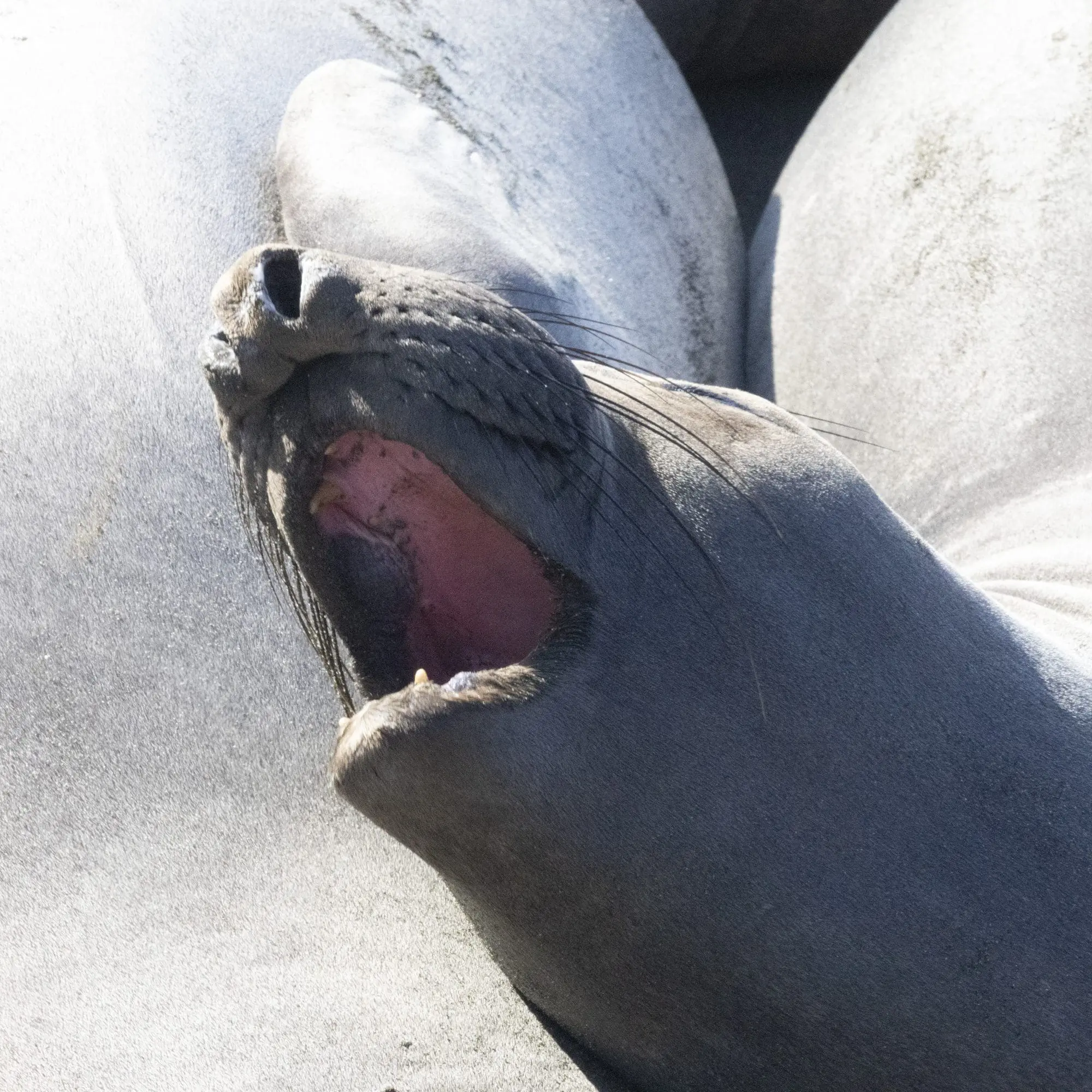
And they do move around…occasionally.
They also fight. Although with these juveniles I suspect that’s mostly play or practice fighting.
